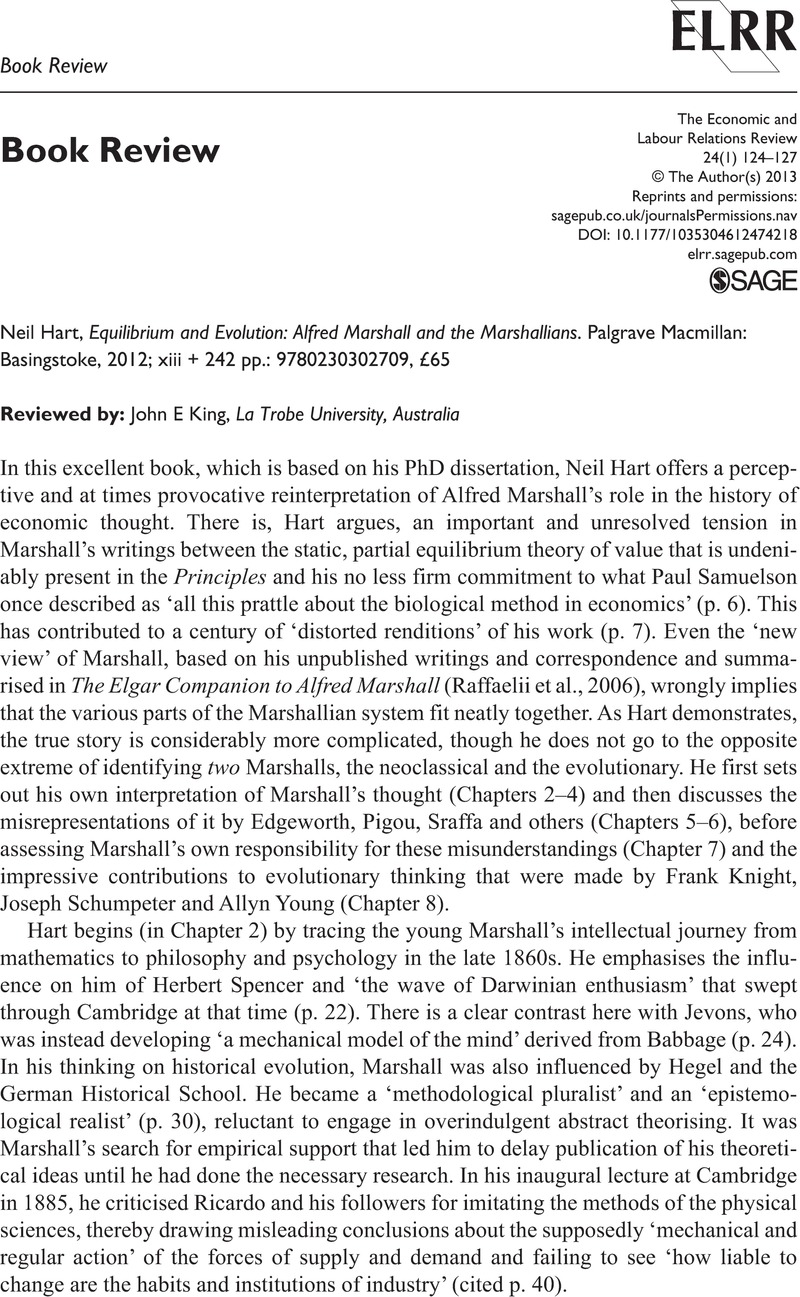No CrossRef data available.
Article contents
Neil Hart, Equilibrium and Evolution: Alfred Marshall and the Marshallians. Palgrave Macmillan: Basingstoke, 2012; xiii + 242 pp.: 9780230302709, £65
Review products
Neil Hart, Equilibrium and Evolution: Alfred Marshall and the Marshallians. Palgrave Macmillan: Basingstoke, 2012; xiii + 242 pp.: 9780230302709, £65
Published online by Cambridge University Press: 01 January 2023
Abstract
An abstract is not available for this content so a preview has been provided. Please use the Get access link above for information on how to access this content.

- Type
- Book review
- Information
- Copyright
- Copyright © The Author(s) 2013
References
Raffaelii, T, Becattini, G, Dardi, M
(eds) (2006) The Elgar Companion to Alfred Marshall. Cheltenham: Edward Elgar.Google Scholar


